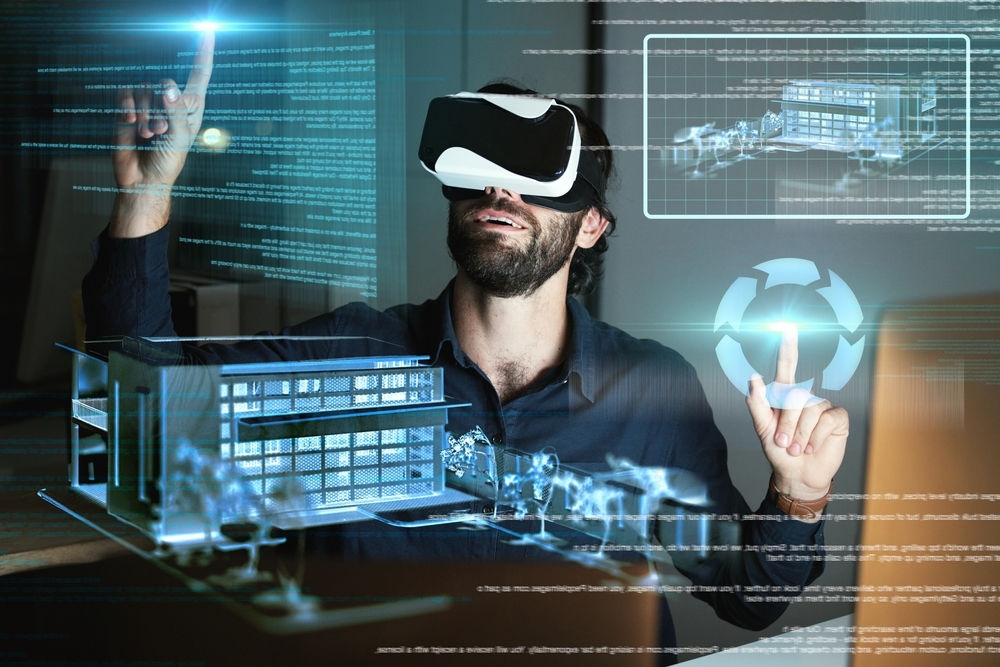In the fast-changing field of architecture, staying innovative is crucial. One of the most groundbreaking technologies making an impact today is Virtual Reality (VR). This advanced tool is revolutionizing how architects design, showcase, and enhance their projects, providing unmatched levels of immersion and interactivity. With VR, architects can transport their clients beyond mere blueprints and renderings, offering a realistic experience of a space before it’s constructed.
What is Virtual Reality in Architecture?
Virtual Reality in architecture refers to the creation of a digital simulation of a building or space that users can explore in a fully immersive setting. By using VR headsets, clients and stakeholders can “walk through” a project in 3D, experiencing the scale, design, and atmosphere as if they were actually there.
Key Applications of VR in Architecture
1. Immersive Design Visualization:
VR allows architects to create fully immersive 3D environments that clients can explore. They can walk through a room, examine textures, and experience changes in lighting in real-time, providing a tangible sense of the project before construction starts. In the competitive world of real estate and architecture, immersive design visualization has become a crucial tool for success. This cutting-edge technology enables architects, designers, and real estate professionals to bring their ideas to life, creating an interactive experience that resonates with clients and stakeholders. By moving beyond traditional 2D renderings, immersive design visualization offers a compelling way to showcase projects in stunning, interactive 3D detail.
2. Streamlined Client Presentations:
In architecture and design, effective communication is essential for turning visions into reality. Streamlined client presentations, enhanced by advanced architectural rendering, transform how concepts are shared and understood. By utilizing lifelike visuals and interactive tools, architects can present their ideas with clarity and precision, leaving a lasting impression on clients. Instead of static blueprints and 2D renderings, dynamic VR walkthroughs allow clients to engage with the design, providing immediate feedback and fostering a deeper connection to the project. They can experiment with colors, furniture placement, and lighting to ensure the design aligns with their vision. Streamlined presentations save time by minimizing back-and-forth communication. Clear visuals help resolve uncertainties quickly, speeding up decision-making. Capture the essence of your design with cinematic animations, 360-degree views, and immersive renderings that highlight the project’s key features. A clear and visually engaging presentation builds trust and confidence, promoting collaboration and satisfaction throughout the project.
3. Design Refinement:
Virtual reality enables architects to experiment with design elements such as furniture arrangement, spatial flow, and lighting setups. This interactive method helps in spotting and addressing potential issues early in the design phase. In architecture and design, even the tiniest details can have a significant impact. The design refinement process is vital for architects, designers, and clients to assess and improve every facet of a project before it enters the construction stage. With cutting-edge architectural rendering tools, this process becomes more accurate and effective, ensuring seamless execution and maximum client satisfaction.
4. Real Estate Marketing:
Real estate developers can leverage virtual reality to provide virtual tours of properties to buyers, even if those properties are still being built or are situated far away. This is particularly beneficial for international clients or for pre-selling units. In the competitive real estate market, distinguishing yourself requires more than just an appealing listing. Real estate marketing blends strategy, creativity, and technology to engage buyers, foster trust, and boost sales. By presenting properties in the most attractive way—whether through eye-catching visuals, immersive virtual tours, or focused marketing campaigns—you can draw in the right audience and convert leads into dedicated clients. Real estate marketing is crucial for highlighting your properties, establishing your brand, and connecting with potential buyers or investors. It’s not merely about selling homes; it’s about crafting a narrative that resonates with your audience and helps them recognize the value of what you offer.
5. Urban Planning and Large-Scale Projects:
For city planners and developers, VR offers a way to simulate entire neighborhoods or cities, giving a comprehensive view of infrastructure, traffic patterns, and community integration. Urban planning is essential for creating sustainable, functional, and visually appealing cities. The advent of advanced rendering techniques has transformed this field, allowing planners, architects, and stakeholders to visualize large-scale developments with remarkable clarity and detail. From initial concepts to final designs, rendering helps urban planners convey ideas, refine their designs, and make informed choices that will influence the future of our communities. In urban planning, rendering involves creating 3D visualizations of cityscapes, infrastructure, and landscapes. These digital models enable stakeholders to engage with proposed designs in an immersive and interactive way, providing a bird’s-eye perspective of entire neighborhoods, traffic patterns, and public spaces.
6. Educational and Training Tools:
Leverage VR to train architecture students and professionals by immersing them in historical landmarks, intricate designs, or construction sites without stepping outside the classroom.
7. Virtual Prototyping:
Highlight unique architectural features or innovative designs with VR prototypes, allowing stakeholders to evaluate their practicality and attractiveness. Virtual prototypes in 3D rendering are changing how designs are conceived, visualized, and improved. By developing highly realistic and interactive digital models, architects, designers, and product developers can explore concepts, test functionality, and make informed decisions without needing physical prototypes. This cutting-edge approach not only conserves time and resources but also provides an exceptional level of precision and adaptability. A virtual prototype is a fully developed 3D digital model that represents a product, structure, or design in its entirety. These prototypes are crafted using advanced rendering software and can be examined from all angles.
The Future of 3D Architectural Rendering
The future of 3D architectural rendering combines innovation, realism, and interactivity. As technology progresses, rendering goes beyond merely producing stunning visuals; it focuses on providing immersive, data-driven experiences that improve design, communication, and decision-making. With the rise of AI, real-time rendering, and virtual reality, 3D architectural rendering is set to transform how we imagine and build the spaces of the future.
